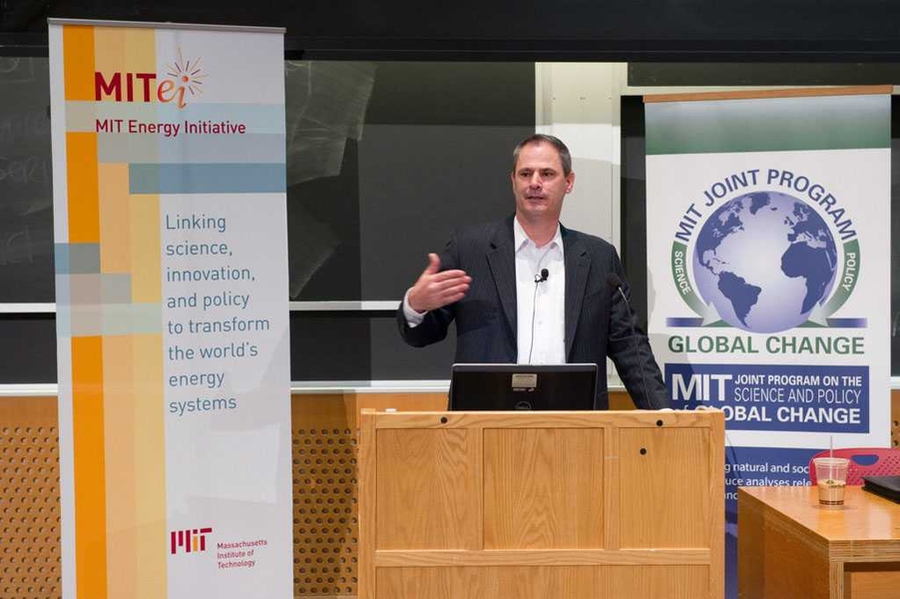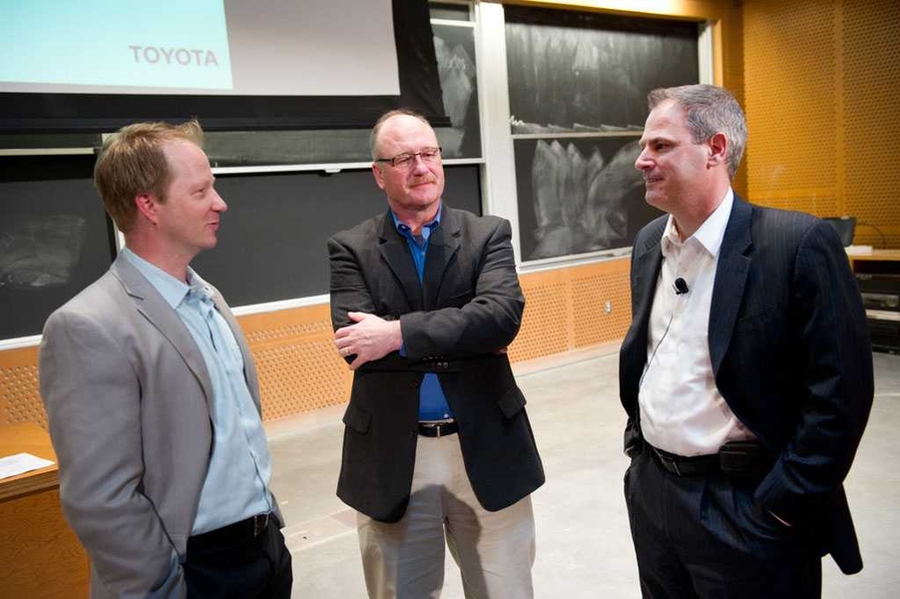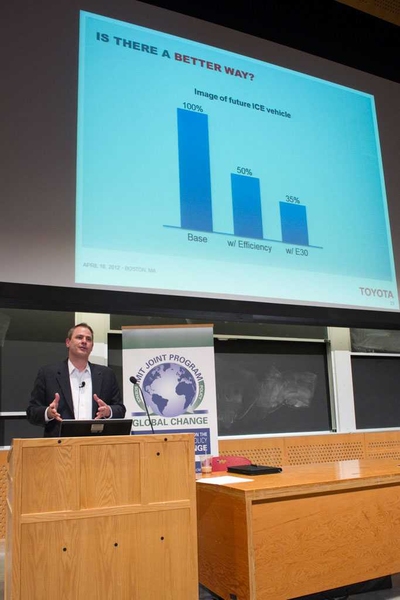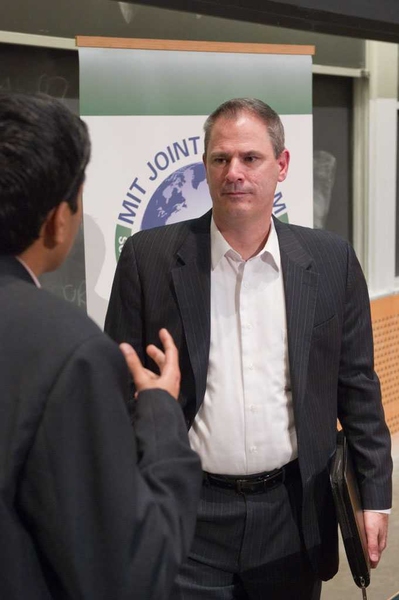As gasoline prices continue to remain high, with the nationwide average jumping 19 cents a gallon in March, Americans and automakers alike are investing in alternatives. But what’s the most effective way forward for the auto industry? Toyota’s Tom Stricker gave his take on Wednesday, April 18, during an event at MIT co-sponsored by the Joint Program on the Science and Policy of Global Change and the MIT Energy Initiative.
Stricker — the automaker’s vice president for technical and regulatory affairs, and energy and environmental research — focused on a proposal up for debate in Washington: the Open Fuel Standard. The bill would require automakers to phase in cars capable of running on something other than just gasoline, beginning with 50 percent in model year 2014 and reaching 95 percent by model year 2018.
While it does not dictate what cars should run on — natural gas, electric, hydrogen, biodiesel or a flexible fuel mix — Stricker made clear that at least in the short term the flexible fuel vehicles would be the only likely scenario to meet the mandate. Such flexible fuel mixes would consist of E85 and/or M85 fuels (85 percent ethanol or methanol, respectively, and 15 percent gasoline).
- Video: Watch the event
Advocates of the proposed mandate have claimed that the flexible fuel vehicles would cost only about $100 more per vehicle, that the infrastructure needed to make the change exists, and that we can make them quickly.
“We don’t have to wait for the perfect technology. We can turn this around right now, at little to no cost,” U.S. Rep. Eliot Engel (D-N.Y.), a bill co-sponsor, said when the bill was introduced.
But Stricker believes that to make a very robust vehicle it would cost much more. Showing a page from another automaker’s owner’s manual, it said that the vehicle may not run very well using the fuel mix in cold temperatures and if that’s the case to fill up with gasoline.
“This is what you get when you pay $100 per vehicle for the system,” Stricker said. “From Toyota’s perspective, we don’t want to put products out there that we don’t think are robust and can operate problem-free under any conditions.”
Stricker estimated the industry-wide cost to be more like $2.5 billion to $5 billion a year to produce, considering the engineering required for adding methanol capability to current flexible-fueled vehicles and meeting future emissions standards.
At that price, Stricker noted, “within about a year you have reached the total investment that the automotive industry has made in hydrogen fuel cell vehicles ever. And that’s a vehicle that uses no petroleum, zero emissions. It’s a lot of money and it takes away a lot of resources that could be used potentially more effectively.”
Along with the steep price tag, Stricker believes we don’t have enough ethanol or the capacity to produce it at the levels we would need. He also said the timeline just doesn’t match up — with the first requirements needing to be phased in for 2014 model vehicles, which Toyota and the rest of the industry finished the plans for a couple years ago.
Lawmakers and advocates have said the main purpose of the mandate would be to give consumers choices at a time when gas prices are high and will continue to be volatile.
“As any driver who has recently filled up their tank knows, gas prices are simply unsustainable,” said Open Fuel Standard bill co-sponsor U.S. Rep. Steve Israel (D-N.Y.), when the bill was introduced. “By requiring auto companies to convert their fleets to flex fuel vehicles, we will be giving consumers the choices they deserve.”
Consumers do seem to like the idea of renewable fuels, with 75 percent recently polled by the Renewable Fuels Association saying they would support requiring automakers to build cars to run on fuel sources other than oil. Whether or not consumers would actually buy renewable fuels for their cars is up for debate. Sticker said no — and brought evidence to back it up. Giving the example of Minnesota — the state with the most number of E85 stations and a significant number of flex fuel cars — Stricker’s data showed that on average the use of E85 per flex fuel vehicle was only 10.3 gallons last year.
“This is what the real world has told us. Even when the vehicles are available, and the fuels are available, people don’t buy it. And I think the reason is pretty simple. It’s not a good deal for the customers.” Stricker said. “It’s still more expensive than gasoline, even with relatively high gasoline prices.”
What Americans are buying, and in record numbers, are hybrids. Last month, hybrid and electric vehicles saw their greatest share yet of the U.S. auto market. Toyota’s Prius was the runaway bestseller, with the Toyota Camry hybrid coming in second.
Stricker sees these as a better deal, and said focusing on more-efficient vehicles is the number one thing automakers can do to reduce oil consumption and the greenhouse gases that go with it — rather than focusing on solutions that technology could make obsolete before they get implemented.
A lot of past plans, he noted, didn’t pan out “because there wasn’t much thought put into how to bridge that chasm between ‘this is what I think I want in the future’ and ‘this is the bin of technology that I see available today’.”









